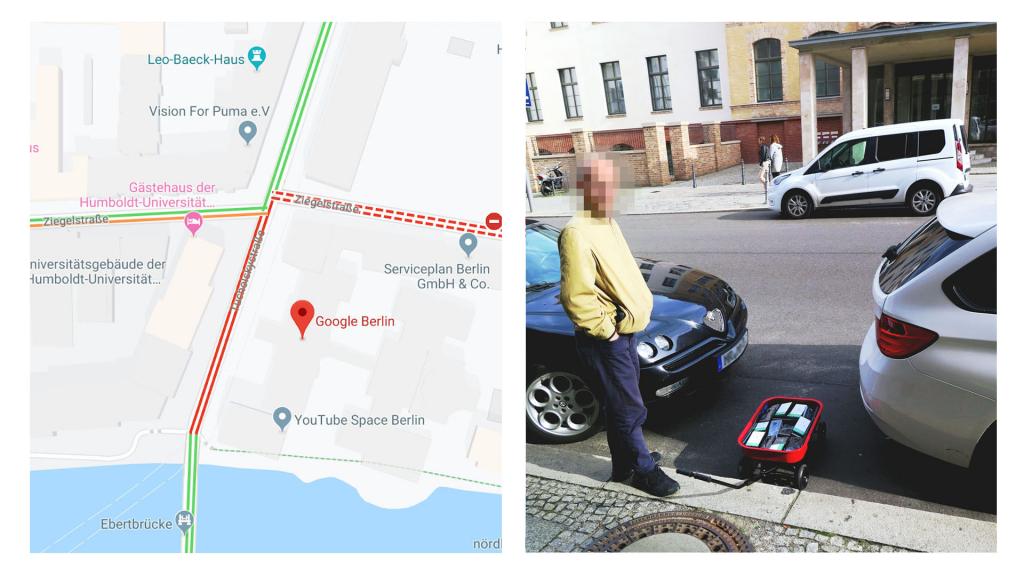
Update, February 3, 2020 (5:15 PM ET) Google just responded to the experiment saying whether car, cart or camel, they’d welcome anything that makes Google Maps better.

Artist Simon Weckert wanted to show that technology is not perfect and relying on it completely can have unintended consequences. To do so, he conducted the Google Maps experiment and created virtual traffic jams on Berlin streets. The experiment has already attracted a lot of attention from diverse groups and raised many philosophical questions.
What was Simon Weckert’s Google Map experiment all about?
The experiment was very simple. Simon Weckert put 99 smartphones into a card and turned Google Maps on the devices all at the same time. To make things more ironic he even wheeled the cart outside Google’s office. As a number of smartphones have Google Maps turned on at the same time at the same location, Google Maps servers were tricked into thinking that they were actual traffic jams on the streets.
As Simon loaded the smartphones onto a cart, Google Maps erroneously also believed that the traffic was slow-moving. Consequently, Google Maps started to display streets flooded in red. This misled people into thinking that they were actual traffic jams on the streets of Berlin.
Vulnerabilities in different technologies can result in unsavory situations

As Google Maps uses user-generated data, the smartphones in the cart caused the technology to make incorrect decisions. Simon Weckert's experiment is proof of technology being imperfect even when it did exactly what it was supposed to do. Naïvely believing that technology is immaculate or that it's invincible can have disastrous consequences in real life.
It is more of a philosophical question to wonder if technology can ever be perfect. As man creates every technology, all of them are prone to human errors. They're also prone to human mischief and malevolence. In a world that is increasingly volatile, this can result in dangerous situations.
Questioning the infallibility of technology
As artificial intelligence is becoming popular, people are increasingly questioning technology’s infallibility. Even Blockchain has known errors and people have indulged in mischief. With this being the case, Simon Weckert's experiment stands as testimony to how quickly things can go wrong if someone who wants to trick the system actually starts to do so.
Simon Weckert’s Google Maps experiment makes us all wonder about our own beliefs about technology. This artistic endeavor comes at the right time, and one can only hope that people stop naively believing that technology is always perfect.
The post Simon Weckert Proves Technology Is Imperfect in Google Maps Experiment appeared first on Walyou.